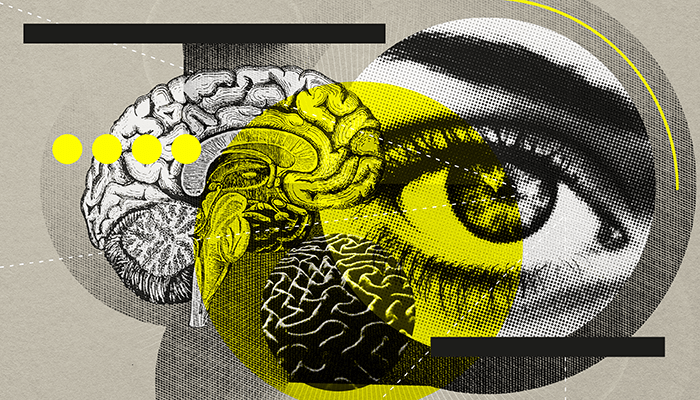
A research team from New York University’s Center for Neural Science and Department of Psychology recently identified that the size of the primary visual cortex and the amount of brain tissue dedicated to processing visual information for certain locations of visual space is a good indicator of how well humans can see (1). Marc Himmelberg, lead author of the paper, explains further.
What’s your elevator pitch for the study?
There is substantial variability in the organization of visual maps in the human brain; importantly, the organization of such maps contributes to visual perception. Our work shows that across individuals, the overall surface area and localized measurements of V1 surface area (which represent visual field location) are predictive of how well someone can see. Generally, having more V1 surface area – and, as a result, more neurons – results in better vision.
What prompted your research?
Previously, we measured contrast sensitivity at different locations of the visual field; at the group-level, people had the greatest contrast sensitivity to the left and right of fixation, intermediate sensitivity below fixation, and poorest sensitivity above fixation. We also found that there were large differences in contrast sensitivity measurements between individuals, leading us to wonder why. We thought it might be due to the surprisingly substantial variation in primary visual cortex (V1) organization.
Prior work hypothesized that the amount of V1 tissue, and therefore neurons, dedicated to processing a particular visual field location determines the contrast sensitivity at that point (2). And that explains why contrast sensitivity declines from the center to the periphery of the visual field – there is less V1 tissue processing the peripheral visual field.
We extended this hypothesis to explain differences in contrast sensitivity for different angular locations of the visual field, as we knew contrast sensitivity changed as a function of these locations. We also looked to explain individual differences in contrast sensitivity because we knew that V1 organization varied across individuals. fMRI was used to measure brain tissue in human participants to compare measurements of V1 surface area with contrast sensitivity.
Overall, we wanted to understand if these individual differences in contrast sensitivity were primarily driven by individual differences in the organization of V1. Our study shows that they are.
Why should ophthalmologists learn about your results?
Contrast sensitivity is highly dependent on where in the visual field you make a measurement. This is because there is a different amount of cortical tissue processing different visual field locations. One example of this is that contrast sensitivity is greater at the fovea than in the periphery. This is because the map of visual space in V1 is organized to have more cortical tissue, representing the fovea than periphery.
Our work shows that contrast sensitivity is also much greater along the horizontal than vertical meridian, and greater along the lower than upper vertical meridian of the visual field, and that this pattern matches the organization of the V1 tissue. This means that it is important to consider the location at which any measurements of visual functioning are made, both relating to contrast sensitivity and acuity, because visual field location heavily influences these measurements.
Any potential future implications or applications of the study results?
Historically, much of vision science has focused on explaining typical patterns in an idealized observer by averaging measurements across a group of participants. Though it is certainly important to explain what is common to everyone (or most people) for many applications, such as clinical diagnosis, it is also important to explain the causes of individual variation in visual functioning. This could provide the basis for answering a number of questions; for example, why do some children read slowly, have poor binocular vision, or low acuity? Additionally, we also know that our vision changes as we get older – is this a result of changes in the retina, changes in visual cortex, or both? This is an important step in linking the individual brain to measurements of visual functioning.
What are the next steps for your research – and what are your expectations for the future?
Our study has shown that an individual’s V1 tissue correlates with the contrast sensitivity mapped onto their visual field. However, the results are only correlational and do not explain why having more V1 tissue results in higher contrast sensitivity. There are a handful of reasons as to why this might be, but we don’t yet know for sure. Our team is trying to answer this by building a biologically inspired computational model of V1, incorporating neural properties associated with V1 neurons. We want to see if this V1 model can accurately predict visual measurements.
Additionally, we are also interested in developmental differences in visual perception. We know that there are changes in visual perception from childhood to adulthood, so we are also using fMRI to investigate group-level differences in the organization of V1 between children and adults. Specifically, we want to see if we can identify changes in V1 cortical tissue that might underlie changes in visual perception as we age.
References
- MM Himmelberg et al., Nat Commun, 13, 3309 (2022). PMID: 35697680.
- TJ Andrews et al., J Neurosci, 17, 2859 (1997). PMID: 9092607.
